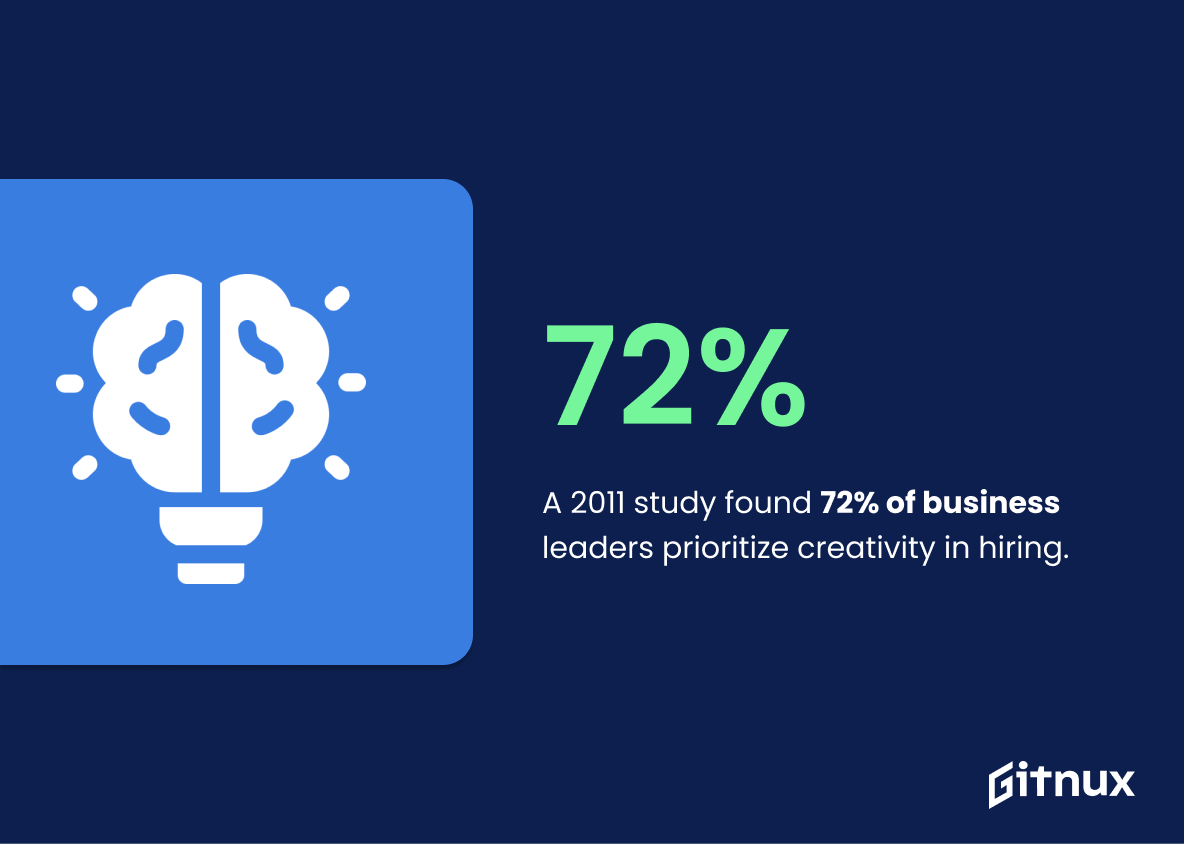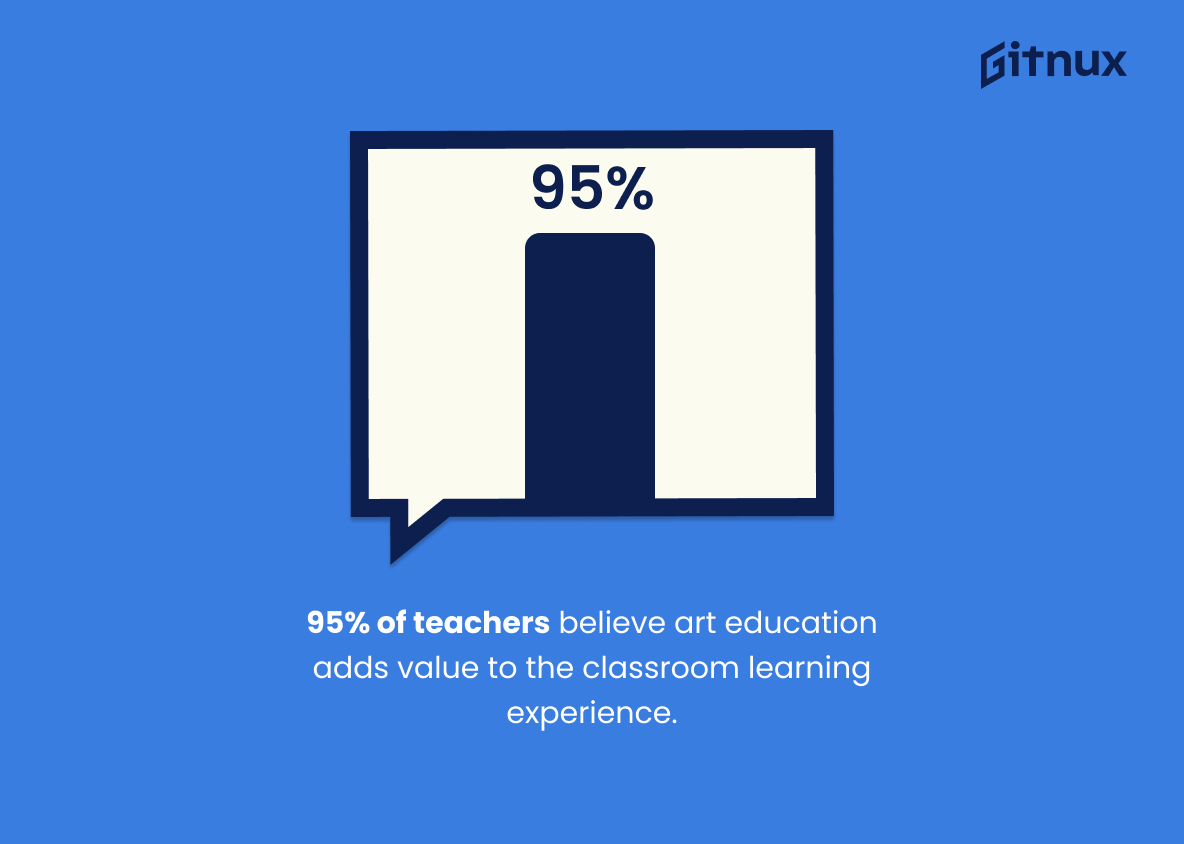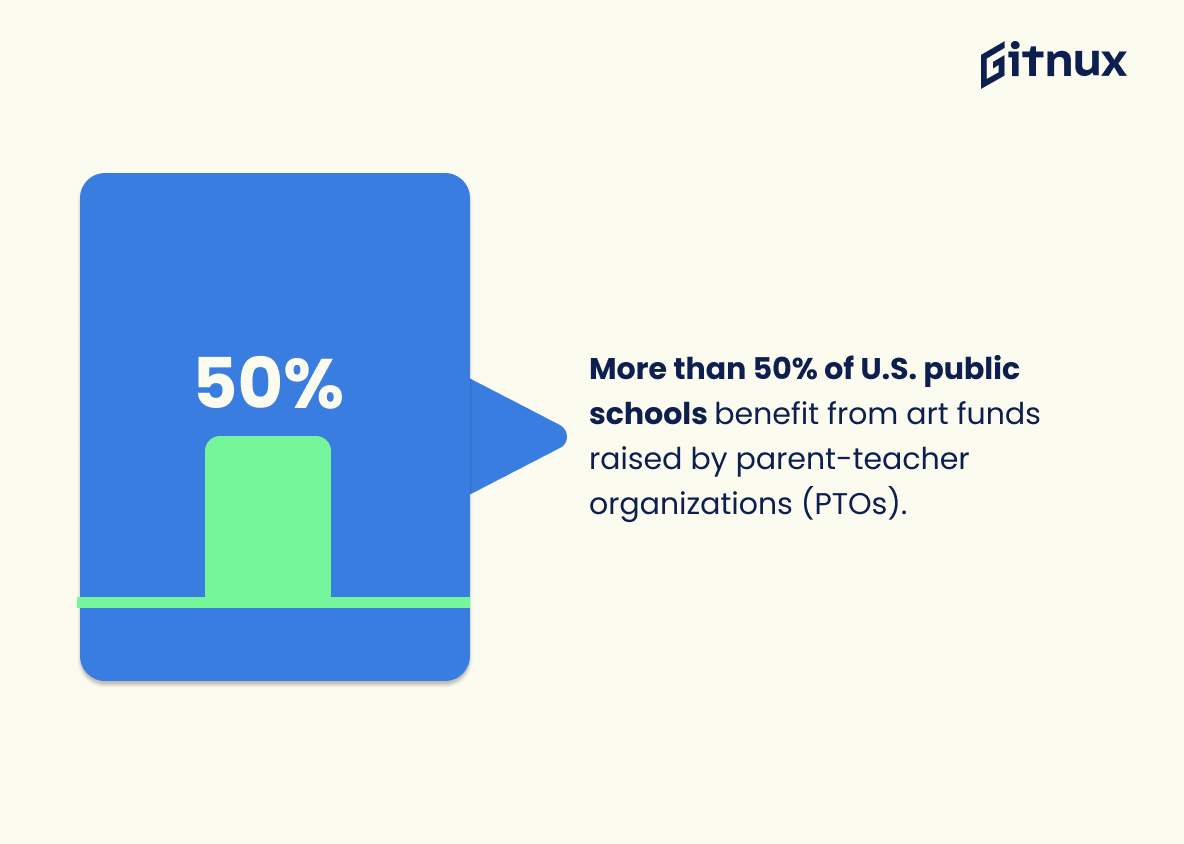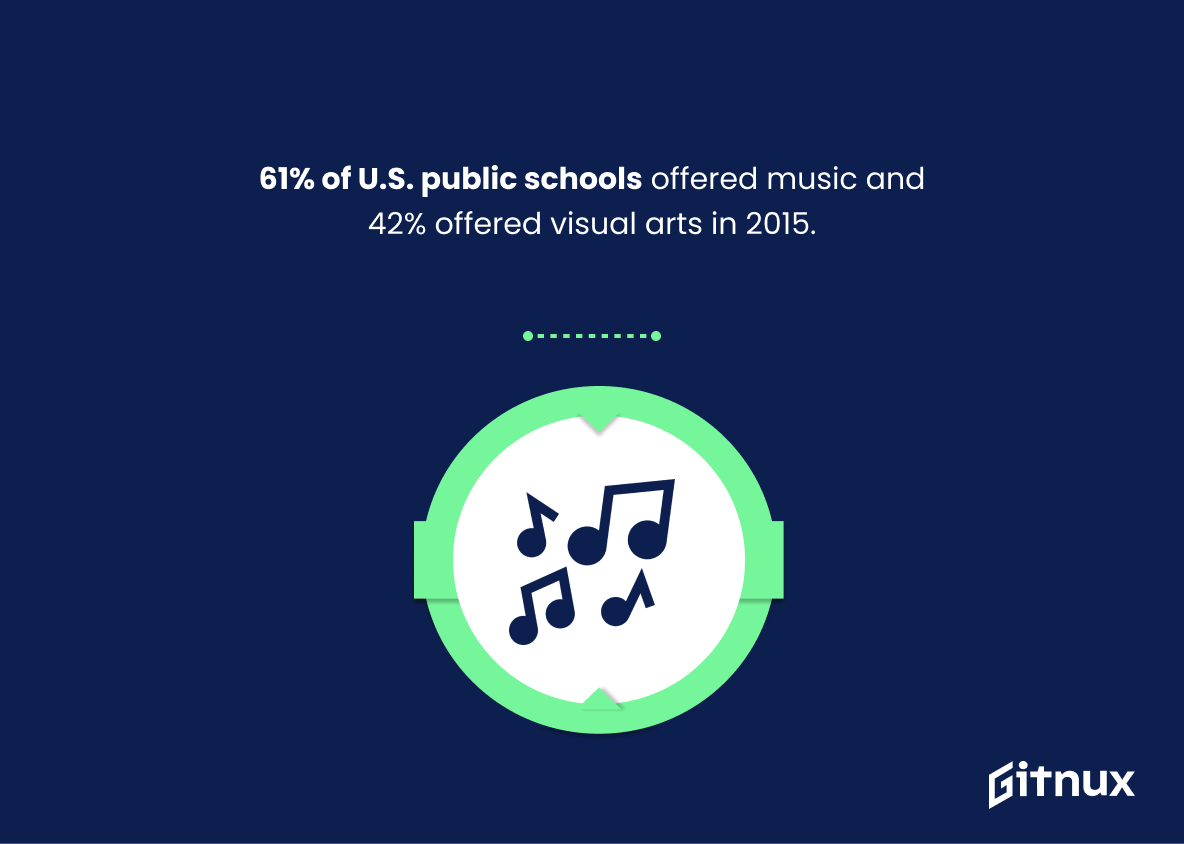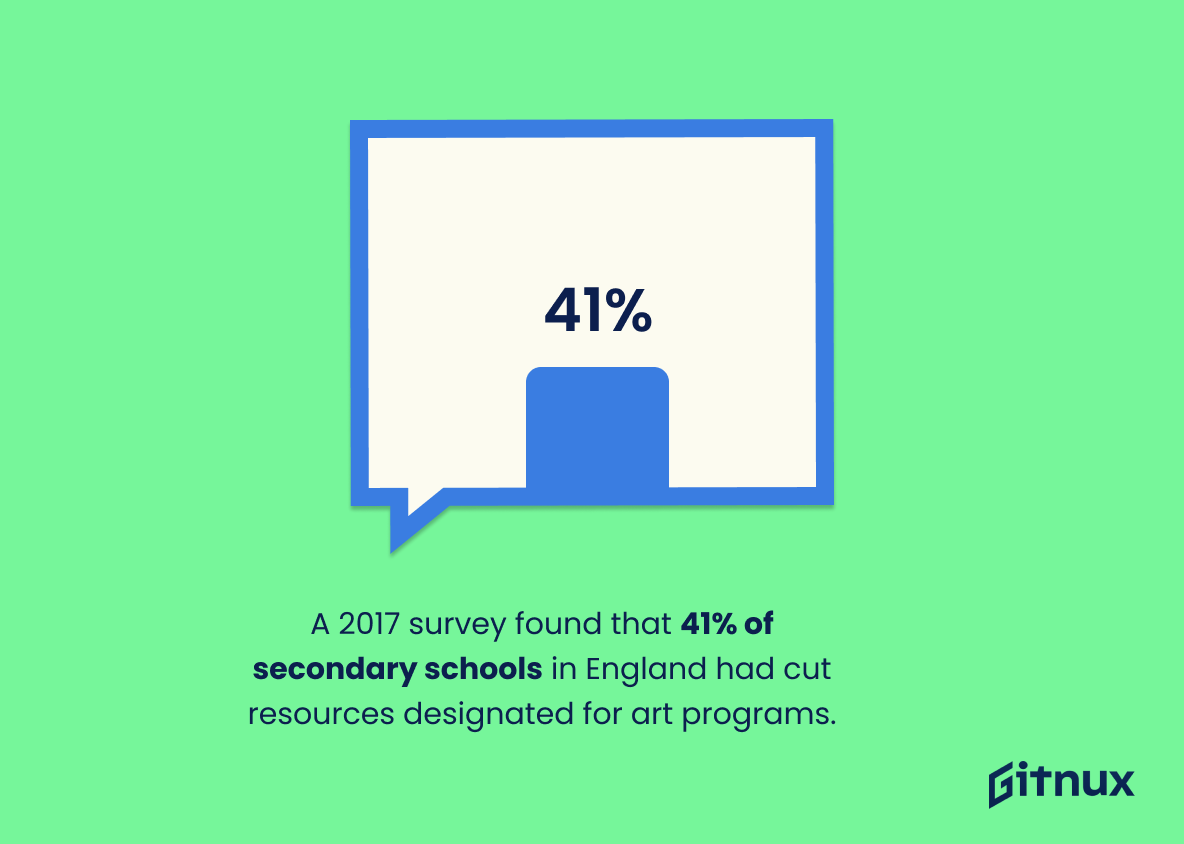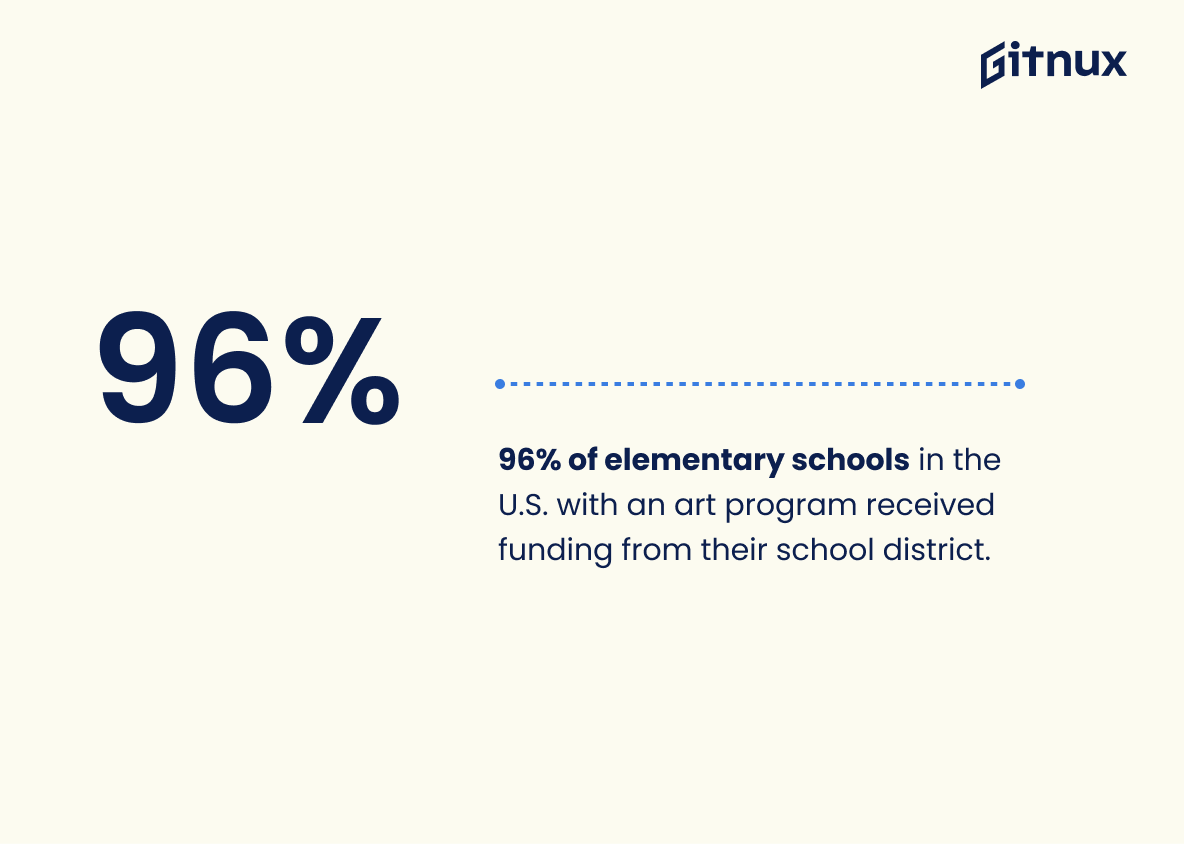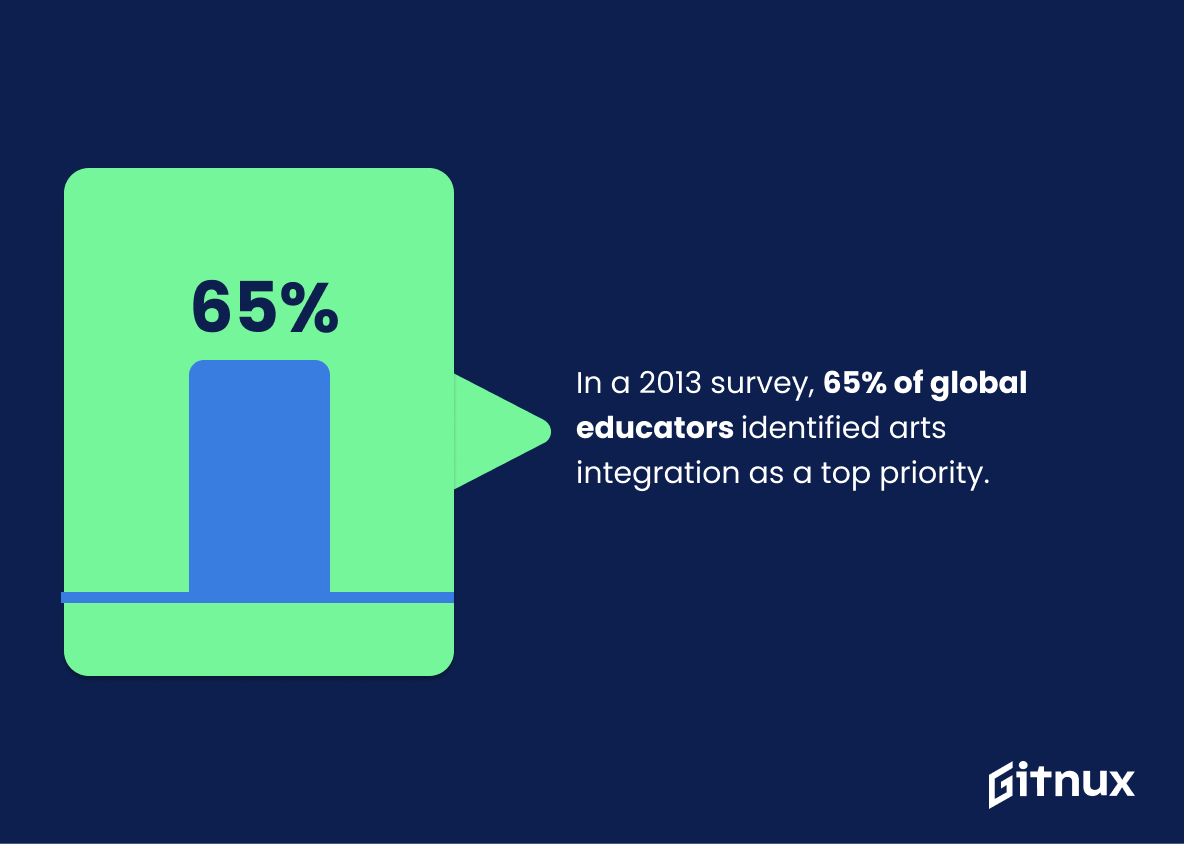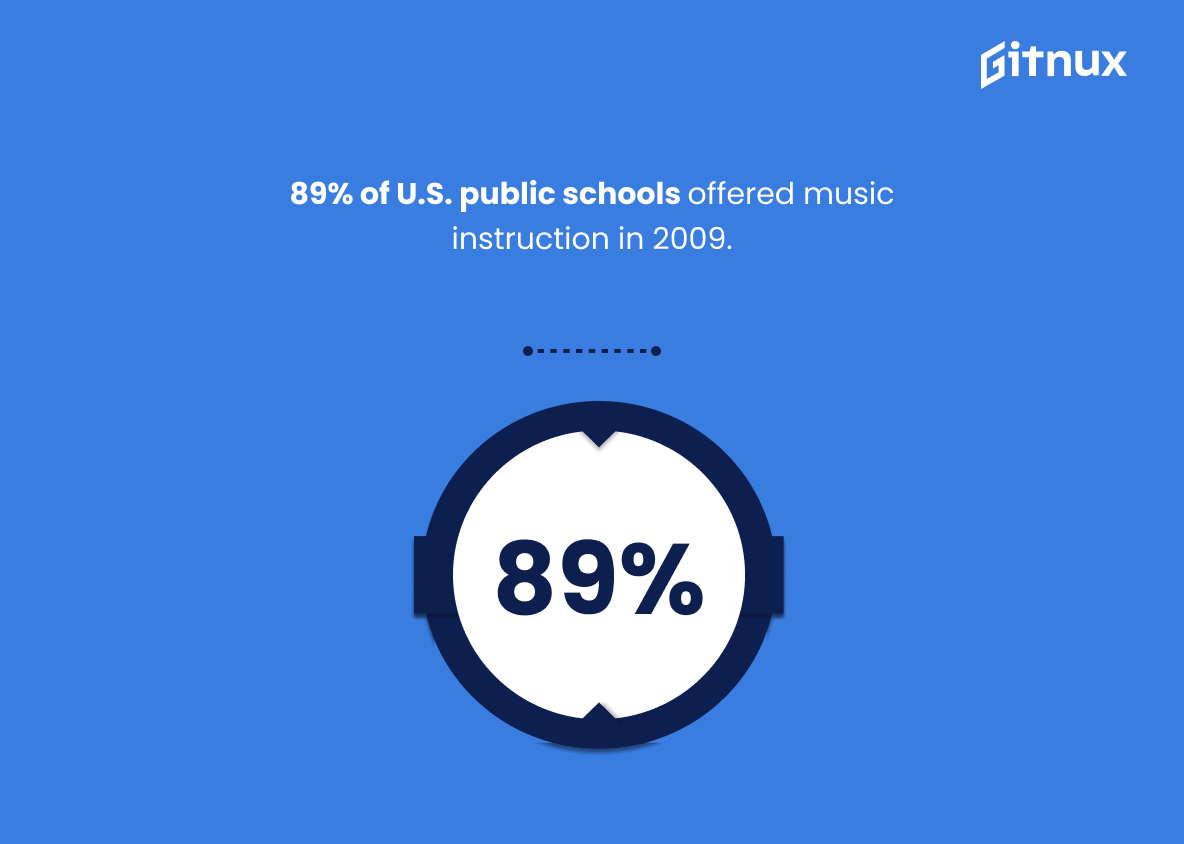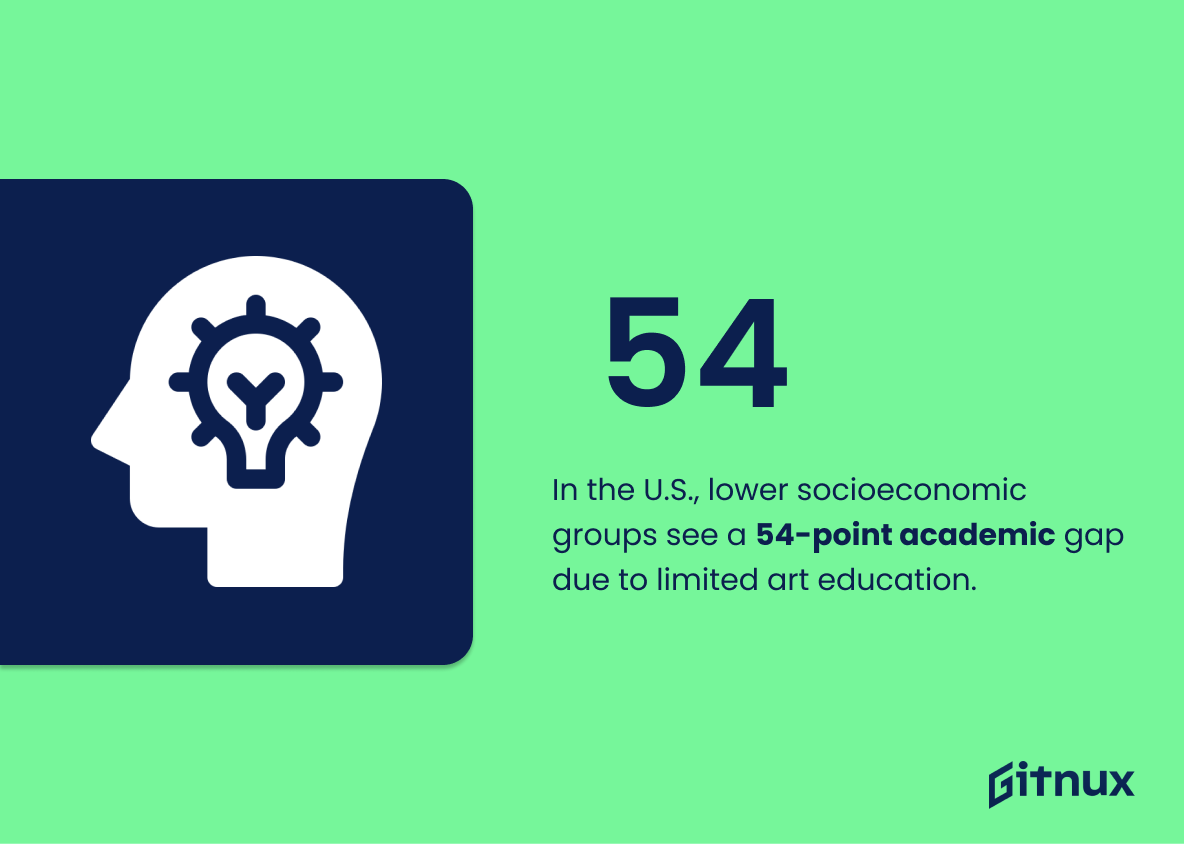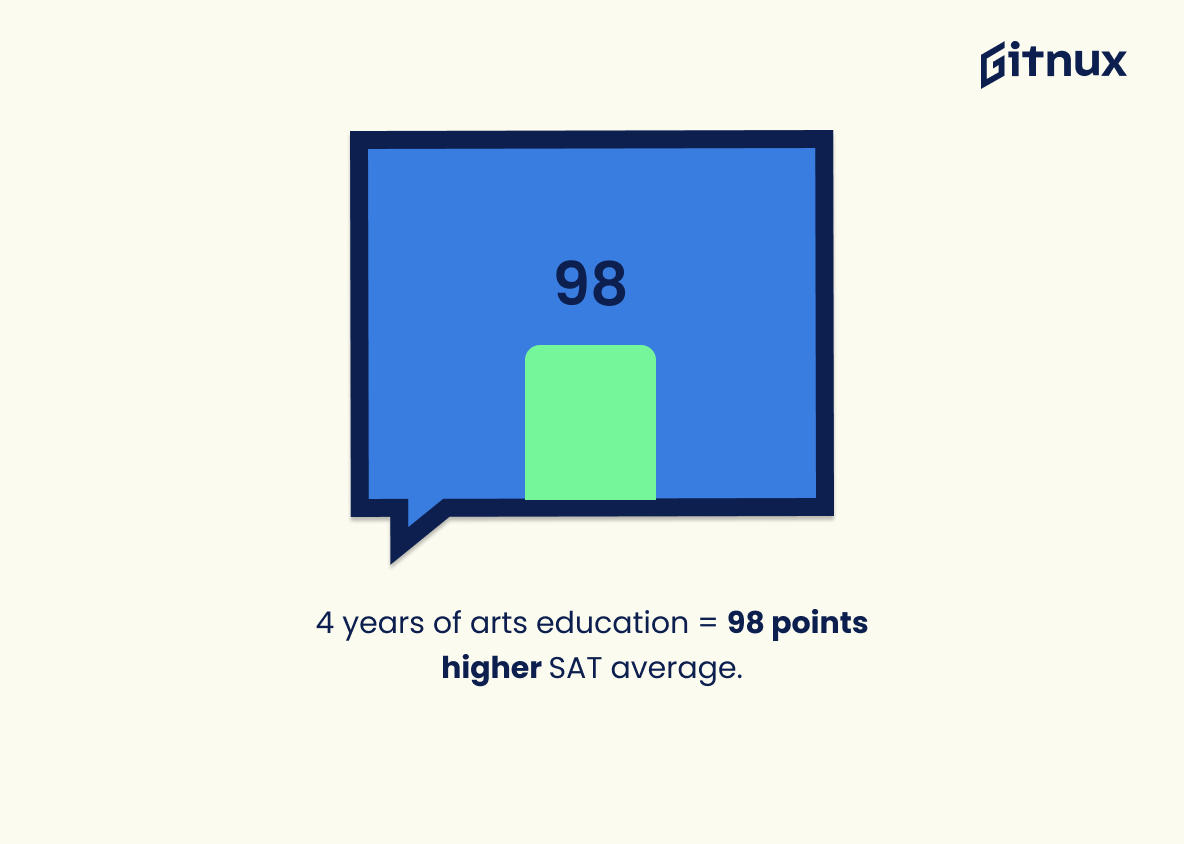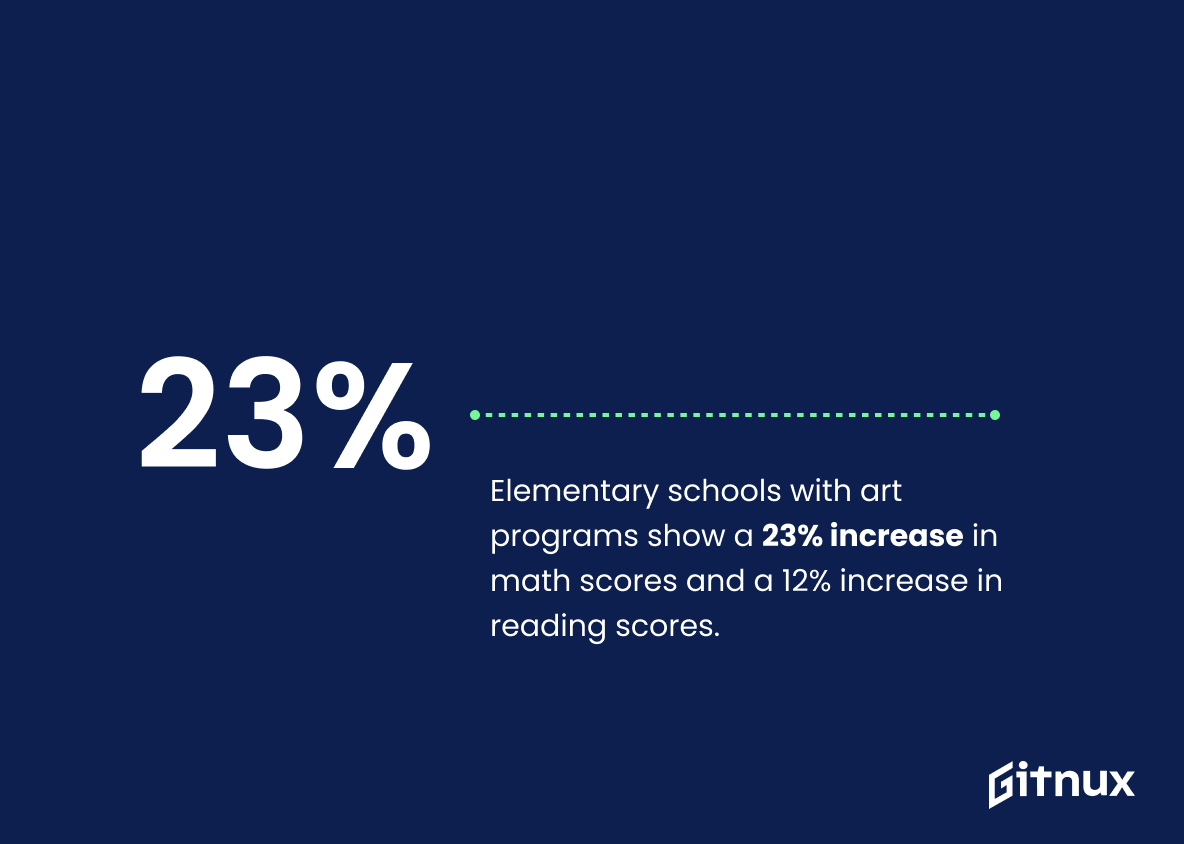The importance of art education is undeniable. Statistics show that 93% of Americans believe it to be essential for a well-rounded education, while 80% identify the arts as important for creative thinking and problem-solving skills. Studies have also revealed that students who study art are four times more likely to be recognized for academic achievements, and schools with an art program boast 15.6% higher graduation rates than those without them.
Business leaders recognize the value in creativity when hiring new employees; 72% claimed they seek out this skill above all else in 2011. Furthermore, 95% of teachers agree that incorporating art into classroom learning adds immense value to their students’ experience – yet between 2008 and 2013 there was a 3.2 percent decrease in U.S public elementary school’s offering such programs due to budget cuts or lack thereof from parent teacher organizations (PTO).
In 2015 music instruction was offered by 61%, while visual arts were available at 42%. Students involved with the arts tend to earn higher GPAs and SAT scores compared those not participating; however 41 % of secondary schools surveyed in England had cut resources designated towards these programs just two years later 2017 . On top of this 96 %of US public schools received funding from their district if they provided an Art Program ,while 64 % employers believed having strong background knowledge on Arts equips job candidates better with problem solving skills . Finally 46 % youth engaging themselves 2 hours per week did not engage any risky behavior even once according research conducted back 2018 .
Overall statistics demonstrate how vital it is for children’s development both academically and socially – making sure every student has access should remain our priority.
Importance Of Art Education Statistics Overview
A 2011 study revealed that 72% of business leaders claimed that creativity is the top skill they seek when hiring.
This statistic speaks volumes about the value of art education in the modern workplace. It shows that creativity is a highly sought-after skill, and that employers are willing to invest in those who possess it. This highlights the importance of art education in developing creative thinking and problem-solving skills, which are essential for success in the business world.
95% of teachers believe art education adds value to the classroom learning experience.
This statistic is a powerful testament to the importance of art education in the classroom. It shows that the vast majority of teachers recognize the value of art education and its ability to enhance the learning experience. This statistic is a strong indicator that art education should be a priority in schools, as it is seen as an essential part of the learning process by those who are responsible for teaching students.
Between 2008 – 2013, art education rates decreased by 3.2% in U.S. public elementary schools.
This statistic is a stark reminder of the declining importance of art education in U.S. public elementary schools. It highlights the need for more attention to be paid to the importance of art education in the development of young minds. It also serves as a call to action for educators, parents, and policy makers to prioritize art education in order to ensure that students have access to the creative and critical thinking skills that art education provides.
More than 50% of U.S. public schools benefit from art funds raised by parent-teacher organizations (PTOs).
This statistic is a testament to the importance of art education in the United States. It shows that parents and teachers recognize the value of art education and are willing to invest in it through PTOs. This indicates that art education is seen as a priority in the U.S. public school system, and that it is something that is valued and supported by the community.
61% of U.S. public schools offered music and 42% offered visual arts in 2015.
This statistic is a powerful reminder of the importance of art education in the United States. It shows that a majority of public schools are providing students with access to music and visual arts, which can help foster creativity and critical thinking skills. Furthermore, it demonstrates that art education is being taken seriously by the educational system, which is essential for the development of a well-rounded education.
Students involved in the arts are more likely to earn higher GPAs and SAT scores.
This statistic is a powerful testament to the importance of art education. It shows that students who are exposed to the arts have a greater chance of achieving academic success. This is an invaluable insight for parents, teachers, and administrators who are looking to maximize the potential of their students. It also serves as a reminder that art education is an essential part of a well-rounded education and should not be overlooked.
A 2017 survey found that 41% of secondary schools in England had cut resources designated for art programs.
This statistic serves as a stark reminder of the impact that budget cuts can have on art education in England. It highlights the need for increased investment in art programs in order to ensure that students have access to the resources they need to develop their creative skills.
96% of elementary schools in the U.S. with an art program received funding from their school district.
This statistic is a testament to the importance of art education in the United States. It shows that school districts recognize the value of art programs and are willing to invest in them. This statistic is a powerful reminder that art education is an essential part of a well-rounded education and should be supported and funded.
In a 2013 survey, 65% of global educators identified arts integration as a top priority.
This statistic is a powerful indicator of the importance of art education in the eyes of global educators. It shows that the majority of educators recognize the value of integrating art into the curriculum, and are prioritizing it in their teaching. This is a strong testament to the importance of art education, and serves as a reminder of the need to continue to invest in and promote art education in schools.
89% of U.S. public schools offered music instruction in 2009.
This statistic is a testament to the importance of music education in the United States. It shows that the majority of public schools recognize the value of music instruction and are providing it to their students. This is an encouraging sign that art education is being taken seriously and is being given the attention it deserves.
In the U.S., children in lower socioeconomic groups average a 54-point academic performance gap due to lack of art education.
This statistic serves as a stark reminder of the importance of art education in helping to close the academic performance gap between children from different socioeconomic backgrounds. It highlights the need for equitable access to art education, which can help to level the playing field and ensure that all children have the opportunity to reach their full potential.
Students who take four years of arts education have an average SAT score that is 98 points higher than those who took half a year or less.
This statistic is a powerful testament to the impact of art education on academic success. It shows that students who take four years of arts education have an average SAT score that is significantly higher than those who took half a year or less. This indicates that art education can have a positive effect on students’ academic performance, and is an important factor to consider when discussing the importance of art education.
Elementary schools with art programs show a 23% increase in math scores and a 12% increase in reading scores.
This statistic is a powerful testament to the positive impact art education can have on students’ academic performance. It demonstrates that when elementary schools provide art programs, students not only benefit from the creative and expressive opportunities, but also see a significant improvement in their math and reading scores. This is a clear indication that art education is an invaluable part of a well-rounded education.
46% of youth who participated in the arts for two hours a week did not engage in risky behavior even once.
This statistic is a powerful testament to the positive influence of art education on youth. It shows that engaging in the arts for two hours a week can have a significant impact on reducing risky behavior among young people. This is an important reminder of the importance of art education in helping to shape the lives of young people and keep them safe.
Conclusion
The statistics presented in this blog post demonstrate the importance of art education. From increased academic performance to creative thinking and problem-solving skills, it is clear that arts education has a positive impact on students’ lives. Furthermore, employers recognize the value of an artistic background when hiring new employees. It is evident from these findings that investing in art programs can have long-term benefits for both individuals and society as a whole.
References
0. – https://www.bbc.com
1. – https://www.huffpost.com
2. – https://www.artsedalliance.org
3. – https://www.niacc.edu
4. – https://www.artsedge.kennedy-center.org
5. – https://www.nces.ed.gov
6. – https://www.artsed.issuelab.org
7. – https://www.artclasscurator.com
8. – https://www.educationcloset.com
9. – https://www.aate.com
10. – https://www.ncbi.nlm.nih.gov
11. – https://www.americansforthearts.org
12. – https://www.rand.org
13. – https://www.edweek.org
